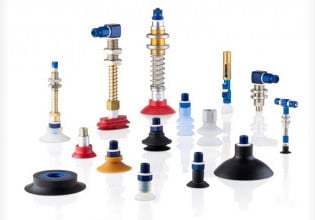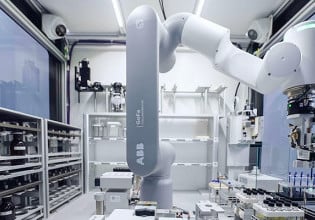Using Measurement While Drilling and Logging While Drilling in Automation
This article discusses measurement while drilling (MWD) and logging while drilling (LWD). Both techniques increase the efficiency and capability of directional drilling as well as the safety of the operators.
Drilling is involved in many industrial applications, including machining microscopic tools, large construction projects, and drilling oil wells. Drilling oil wells is a risky activity with a great deal of uncertainty about the surface to be drilled.

Figure 1. MWD and LWD are both prevalent in oil drilling.
Even with the advanced imaging techniques, it is difficult to determine the challenges the surface would present while drilling. For this, the oil industry widely uses measurement while drilling (MWD) and logging while drilling (LWD).
Both techniques are prevalent when oil wells are drilled at an angle to the surface. In fact, MWD and LWD are instrumental in enhancing the efficiency and capability of directional drilling. They also enable the drill operators to be in a zoned cabin, dramatically increasing the safety of the employees.
What is Measurement While Drilling?
MWD was developed as a solution to the challenges faced when well drilling at extreme angles. At angles of 60o or more from the center, it is difficult to determine what comes next from the images, and drilling by ‘feel’ is a dangerous risk. For MWD, measurement tools are fitted in the drill bores and drill string. This allows for highly optimized drill steering as real-time data from the drill bore becomes available to the operator.
Important physical properties the drill operator needs to assess the surface being drilled are:
- Temperature
- Pressure
- Borehole inclination
- Azimuth

Figure 2. The factors required for MWD. Image courtesy of AONG.
Azimuth is the horizontal direction measured in a spherical coordinate system expressed as angular measurements. All these properties are measured in the borehole and relayed to the operator in real-time. With this information, the operator can drive the drill bore optimally and make informed decisions with tangible data.
What is Logging While Drilling?
Like with MWD, the sensors and tools for measurement are on the bore head for LWD. While MWD measures the physical properties of the drill bore, LWD is more concerned with the properties of the surface being drilled. It measures information that helps in acquiring formation evaluation data such as estimates of pore pressure and mud weight. LWD is a significant part of drill site analysis. It can help with:
- Geosteering
- Geomechanical analysis
- Petrophysical analysis
- Fluid analysis
- Oil well mapping
Different sensors and techniques can be used to implement LWD:
- Nuclear logging
- Acoustic logging
- Nuclear magnetic resonance logging
- Electromagnetic drilling
Differences between MWD and LWD
Depending on the sensors used and intended tasks, MWD can sometimes be classified as LWD. Despite that, there are some significant differences between them.
Transmission Speed
MWD outshines LWD in terms of data transmission. MWD relays information to the operator in real-time. As the information is collected, it displays on the screen the drill operator is watching, helping them make quick maneuvers if necessary.
In the case of LWD, the information is captured by a data capture tool, stored in hard drives, and transmitted to the surface later. The information transmitted to the surface has to be extracted and decoded from the ‘information dump’. Scientists and analysts comb the data from LWD, not the drill operator.
Level of Data Detail
As mentioned earlier, the data collected by MWD and LWD is different. MWD collects the data of physical properties experienced by the drill head like temperature, pressure, inclination, and azimuth.
LWD provides information on the surface that is drilled, like pore pressure, mud weight, fluid characteristics, porosity, resistivity, vibrations, radiation, etc. Data from MWD helps with the real-time execution phase and data from LWD is used in the planning phase.
MWD, LWD, and Automation
Drilling for oil is a highly complex task, and reserves are found in new regions that present different risks. Geopolitical risks, economic risks, the risk to the life of rig personnel, regulatory risks, environmental risks, and geological risks are just some of the risks to overcome to drill a profitable oil well.
Using LWD and MWD helps lower these risks for oil wells. Adding automation to the mix poses even less risk to the life of drilling personnel, helping make oil drilling cost-efficient, reducing the damage to the environment, and avoiding geological risks. Equipment from oilfield services companies like Baker Hughes and Schlumberger has a high level of automation built into it. But due to the volatile and explosive nature of drilling, a completely automated system without human intervention is not a prudent solution. There should always be some human involvement in the operation and automation should enhance the capabilities of human operators.
During the drilling operation, there should be safety limits in place when using automation. The limits for safety are determined with the data obtained through LWD. LWD gives a definitive picture of the surface that is being drilled. From that, analysts can calculate the safe range in which drilling is not prone to risks. The automated drill can operate with real-time information from MWD. This can be referenced against the limits set with the help of LWD.

Figure 3. Production branch valve with feedback positioner controlled by a PLC in gas and oil field.
The information from MWD can be displayed on HMI with color-coding for easier comprehension. When the operation is comfortably within the range set by data from LWD, the visual indicators are green, and once it is beyond the comfort zone it displays with a yellow indicator. Once the data from MWD indicates that the range is breached, the drill head automatically stops, with a red indicator and alarms.
A combination of data from LWD and MWD can be used for automating oil well drilling. Automated drilling with steering can also be implemented with the right programming and an adequate margin of safety.






